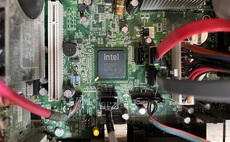PC market recovery comes to an abrupt halt as Intel warns of lower than expected first quarter sales
The recovery in PC sales appears to have faltered after Intel warned investors of a $1bn revenue shortfall in the first quarter, which it attributed to lower than expected sales of business PCs. ...
To continue reading this article...
Join Computing
- Unlimited access to real-time news, analysis and opinion from the technology industry
- Receive important and breaking news in our daily newsletter
- Be the first to hear about our events and awards programmes
- Join live member only interviews with IT leaders at the ‘IT Lounge’; your chance to ask your burning tech questions and have them answered
- Access to the Computing Delta hub providing market intelligence and research
- Receive our members-only newsletter with exclusive opinion pieces from senior IT Leaders




















